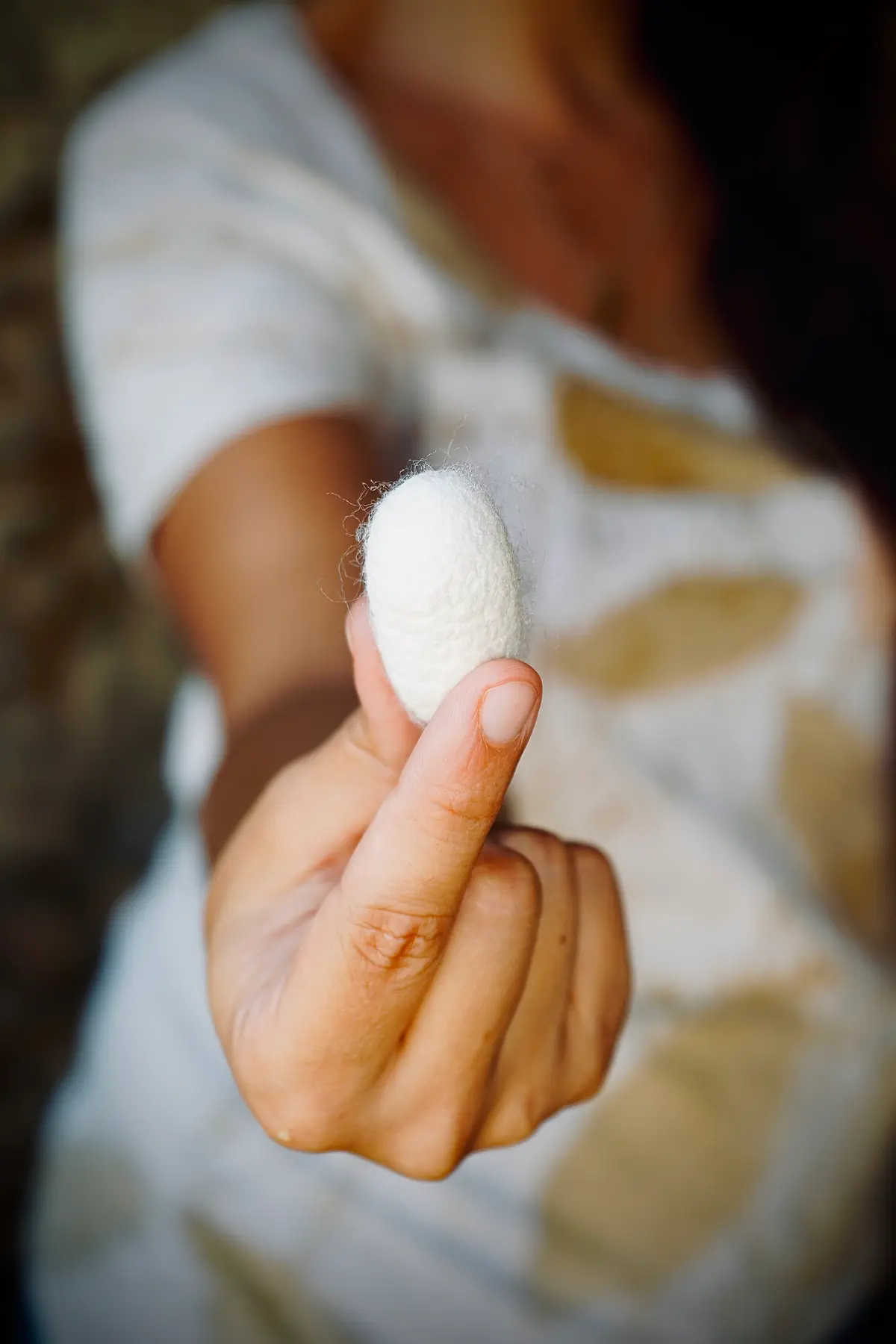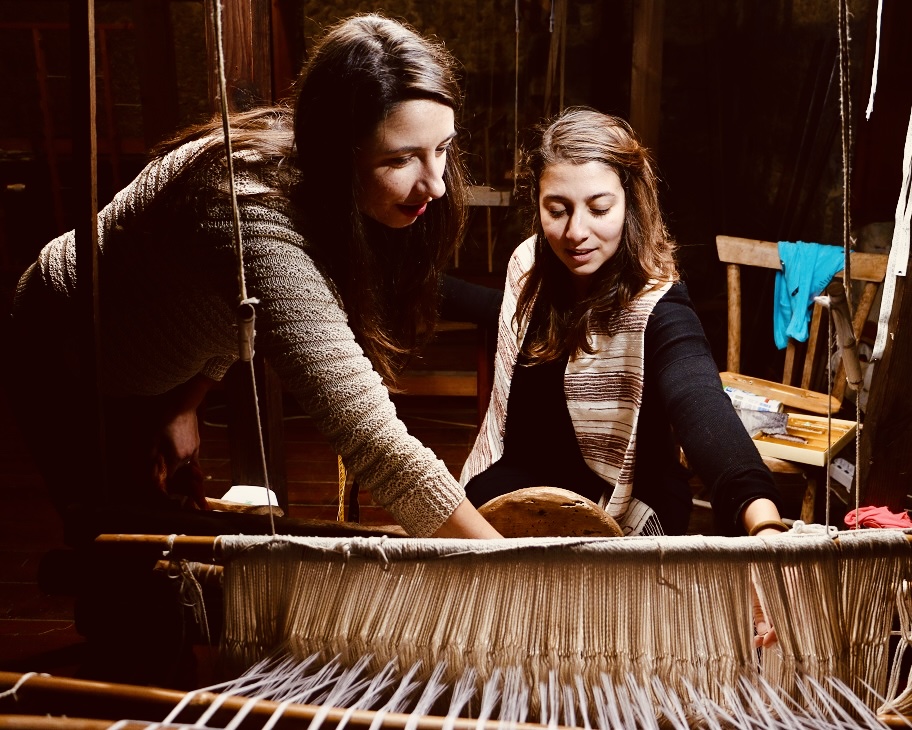In San Floro, on the Silk Road
Discover the ancient art of Calabrian silkworm farming

Living slow
Nido di Seta, San Floro
The silk textile tradition in Calabria is one of the jewels in the crown of regional craftsmanship and enterprise. Once widespread throughout the region, today Calabrian silk has an exceptional centre of gravity: San Floro, on the Ionian coast in the province of Catanzaro.
The “Nido di Seta” cooperative in San Floro produces yarns that are shipped all over the world, featuring in high fashion collections by prestigious brands such as Gucci. The secret? Hard work, raw materials, highly trained workers and innovative solutions!
Let's take a closer look at the secrets of San Floro silk and its thousand-year history.
San Floro, the town of silk
The history of San Floro silk is an ancient one, deeply rooted in identity. It begins with archaeology and continues to the present day, telling the story of the profound relationship between the Calabrians and weaving: a bond “woven” from the exchange of knowledge between Mediterranean peoples, love for the land, patient craftsmanship and techniques handed down from one generation to the next, right up to the most recent technological solutions.
Silkworm farming arrived in the area during the Greek-Byzantine era, together with the cultivation of mulberry trees needed to feed the silkworms brought from the East by monks fleeing iconoclastic persecution, who took refuge on the coast of Calabria. From this moment on, silk production in Calabria, and in particular in the hilly area of San Floro, became a primary industry, organised into provincial districts until the unification of Italy, when the sector was abandoned and relocated to other regions, as was the case with other forms of industrial archaeology in Calabria.
Catanzaro was the capital of Calabrian silk, so much so that, according to local scholar Giuseppe Matarese, the name itself could be associated with the Byzantine word Katartarioi (“silk spinners”). The “City of the Three V's” (Vitaliano, Wind, Velvet, referring to the precious damasks) was at the centre of a virtuous cycle of sericulture, organised around large mulberry plantations and highly skilled labour, with master weavers working on hundreds of looms. Those who wish to admire the only replica of the so-called “Loom of Giovanni il Calabrese” can do so by visiting Palazzo Municipio (with the Mirabilia Historical Association).
The district of San Floro was an integral part of this large production circuit: the prized silk of San Floro is now back in the limelight thanks to the virtuous project of the “Nido di Seta” cooperative in San Floro, which has restored not only the entire industry but also an authentic “Silk Road” to be travelled in several stages.

The Silk Road in San Floro
The educational farm “Nido di Seta” in San Floro offers visit packages and workshops for schools and families, allowing them to discover the art of silkworm farming. An unmissable stop to rediscover the history and current state of Catanzaro's silk heritage, the “Nido di Seta” cooperative in San Floro tells a story of identity, family and collective redemption.
Here, a passionate “returning” generation has created something unique: a system of silkworm farming and fabric production that is strictly manual, based on the same production phases as in ancient times. Walking through the mulberry grove and the adjoining production facilities, you can observe the cultivation of mulberry trees and silkworms up close; witness the manual extraction of the fibre, the natural dyeing and weaving stages on the loom, right up to the final packaging of the product, ready to reach the biggest fashion houses around the world.
Before visiting “Nido di Seta” in San Floro, we stop at the 15th-century Caracciolo Castle, now home to the Silk Museum. Here you can learn about the history of silk in San Floro, and in Catanzaro in general, from 1300 to 1700 through period costumes, damasks, sacred vestments and industrial textile archaeology finds, reviewing all the stages of silkworm breeding and processing. The most recent section of the exhibition is dedicated to silk around the world, with references to France, Thailand and India: a wonderful intertwining of past, present and future!

https://calabriastraordinaria.it/en/news/in-san-floro-on-the-silk-road

